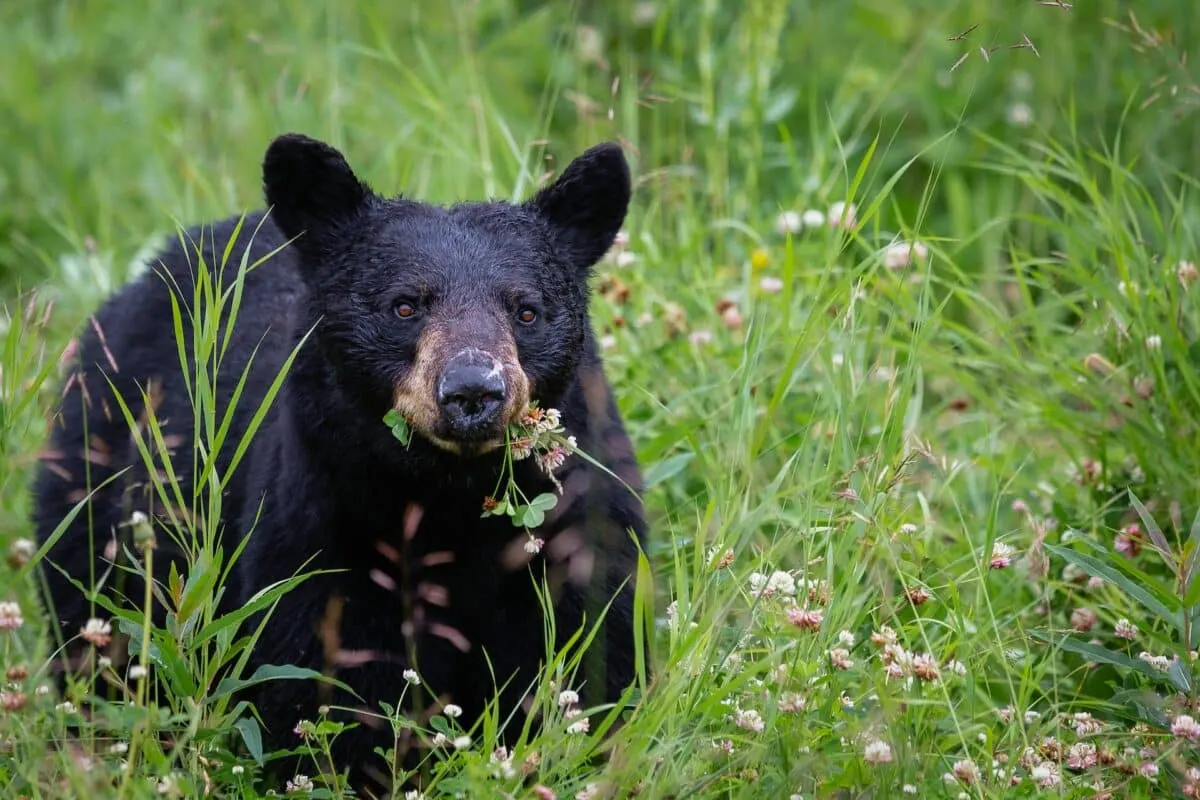Curious about the American Black Bear vs. Tasmanian Devil interaction? Let us dive in!
Embark on an extraordinary wildlife adventure as we delve into the distinct realms of iconic predators: the majestic American Black Bear and the formidable Tasmanian Devil. These captivating creatures captivate the imagination with their untamed spirit and unparalleled hunting abilities.
This article will explore their habitats, behavior patterns, and ecological significance as we unravel the fascinating contrasts between the power and agility of the American Black Bear and the Tasmanian Devil’s unique prowess.
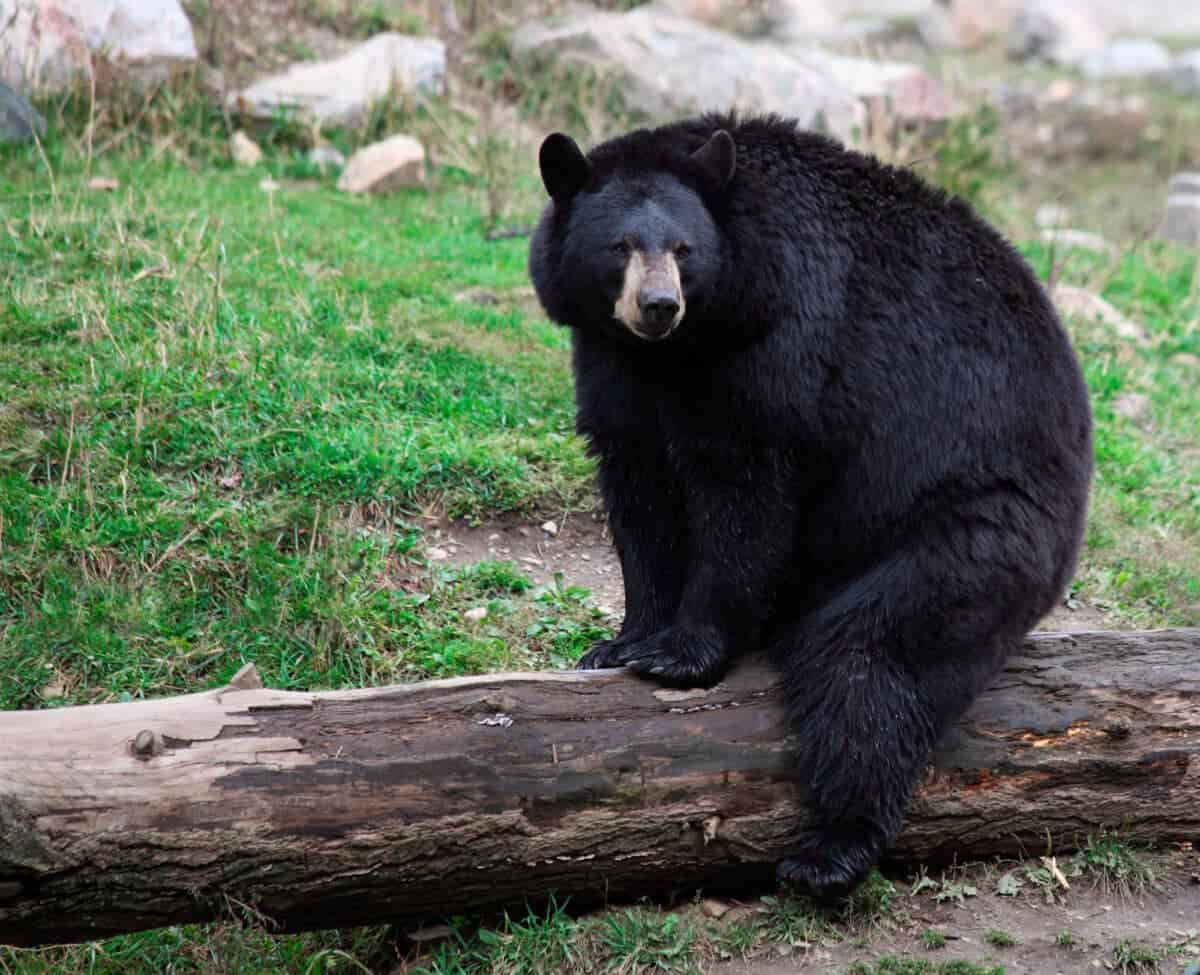
Want to jump ahead? Click below
Comparison Table
| Traits | American Black Bear | Tasmanian Devil |
|---|---|---|
| Size | Larger adults can weigh up to 600 lbs (272 kg) | Smaller adults weigh around 13-26 lbs (6-12 kg) |
| Habitat | Found in North America, diverse habitats, including forests, mountains, and swamps | Native to Tasmania, found in a variety of habitats including forests and grasslands |
| Physical Features | Shaggy black or brown fur, strong build, and sharp claws | Stocky build, coarse fur with black color, prominent jaw, and teeth |
| Diet | Omnivorous, eats berries, nuts, insects, fish, and occasionally small mammals. | Carnivorous, primarily feeds on small mammals, birds, reptiles, and carrion |
| Behavior | Generally solitary, with some social interactions during mating and abundant food sources | Solitary and territorial, known for aggressive and fierce behavior |
| Conservation Status | Least Concern (population stable) | Endangered (threatened by habitat loss and disease) |
Overview of American Black Bear and Tasmanian Devil
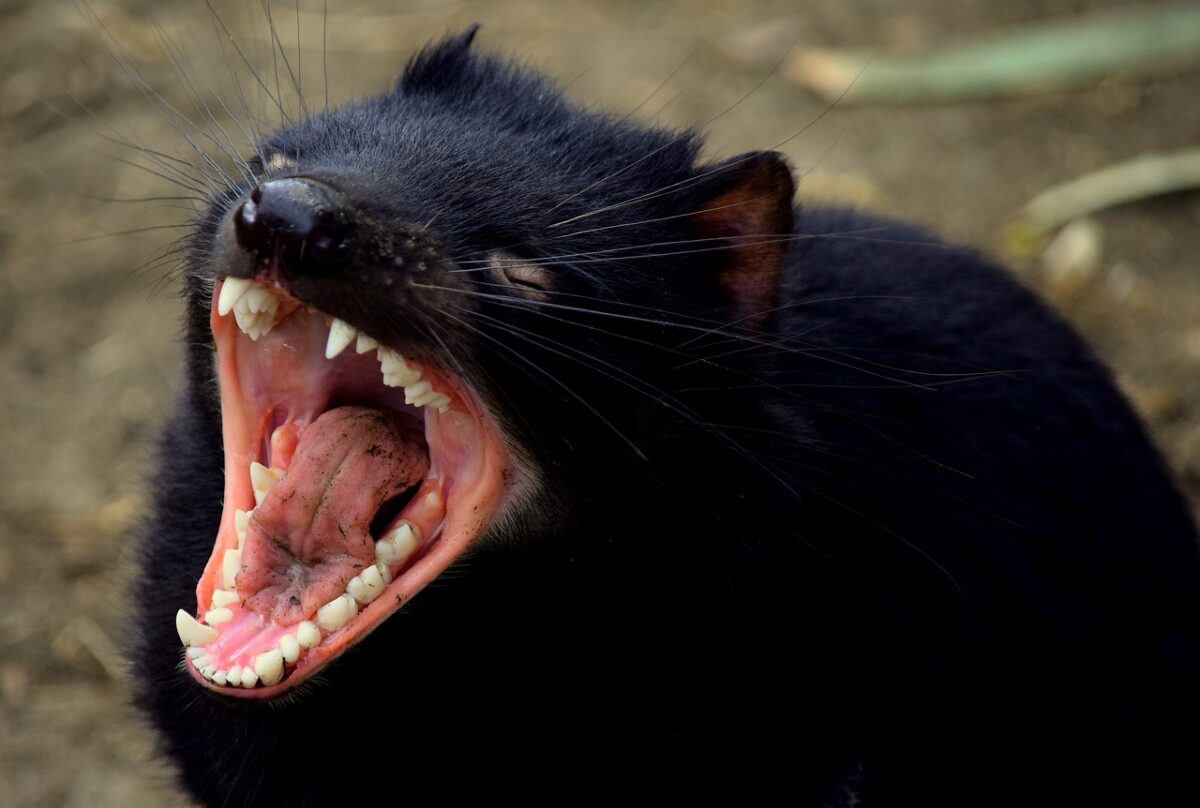
The American Black Bear and Tasmanian Devil might not have much in common, but both unique animals have fascinating characteristics. The American Black Bear is a well-known species found throughout North America. These bears are impressive climbers and can be social, especially during mating season.
On the other hand, the Tasmanian Devil can only be found in the wilds of Tasmania, Australia. Despite their cute appearance, they are fierce predators with strong jaws and sharp teeth. Both species may seem vastly different, but they have adapted to their respective environments in distinct ways.
Anatomy and Physiology Comparison
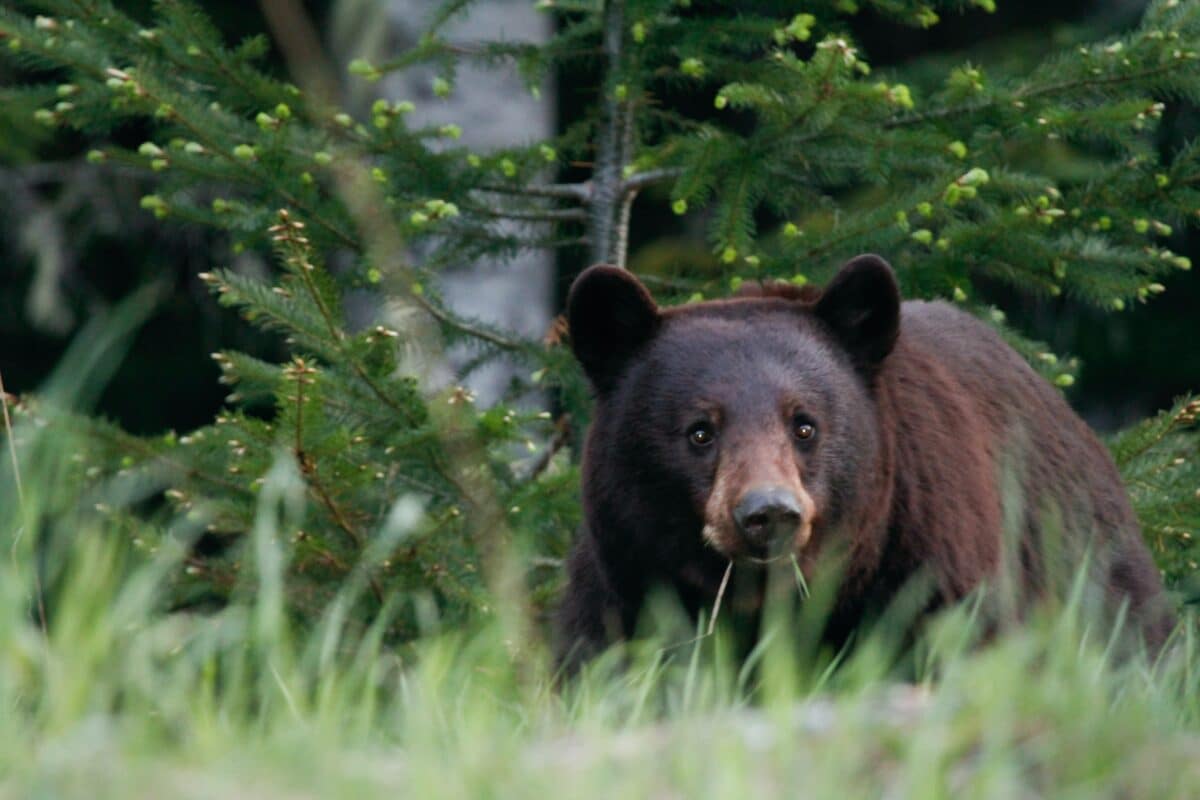
The American black bear and Tasmanian devil may seem like drastically different animals but possess fascinating anatomy and physiology. The American black bear, known for its thick fur, sturdy claws, and powerful limbs, is an omnivorous mammal in North America.
Meanwhile, the Tasmanian devil, a marsupial native to Tasmania, has a curious dark appearance and is notorious for its ferocity. Though they might not seem very similar, the American black bear and Tasmanian devil possess similar digestive systems and hearing ranges. They are known for their impressive ability to adapt to various environments.
Geographic Range and Habitat
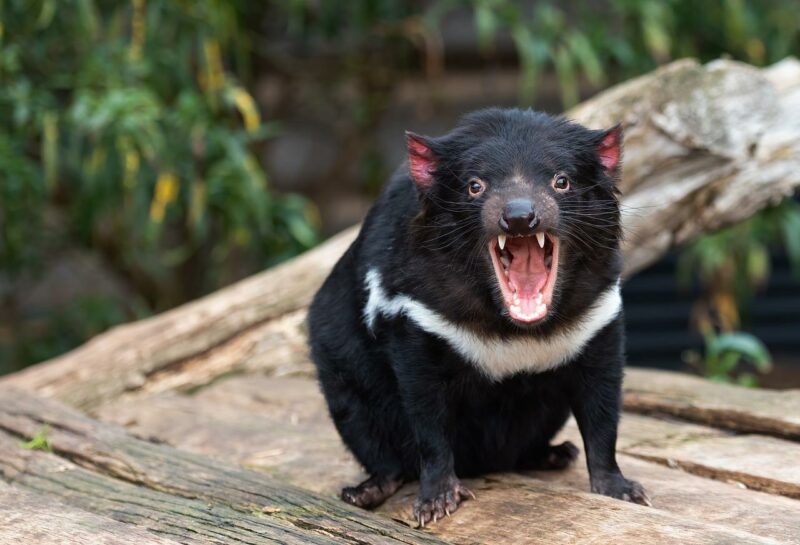
The American black bear and Tasmanian devil may be vastly different creatures. Still, they have one thing in common: their ability to adapt to a wide range of geographic locations and habitats. The American black bear can be found throughout the United States, from the forests of Alaska to the swamps of Florida.
Similarly, the Tasmanian devil is native to Australia, where it can be found in various habitats, including woodlands, coastal scrublands, and even the urban areas of Tasmania. While these two animals may live in vastly different parts of the world, they are resilient in adapting to varied environments.
Diet & Hunting Strategies
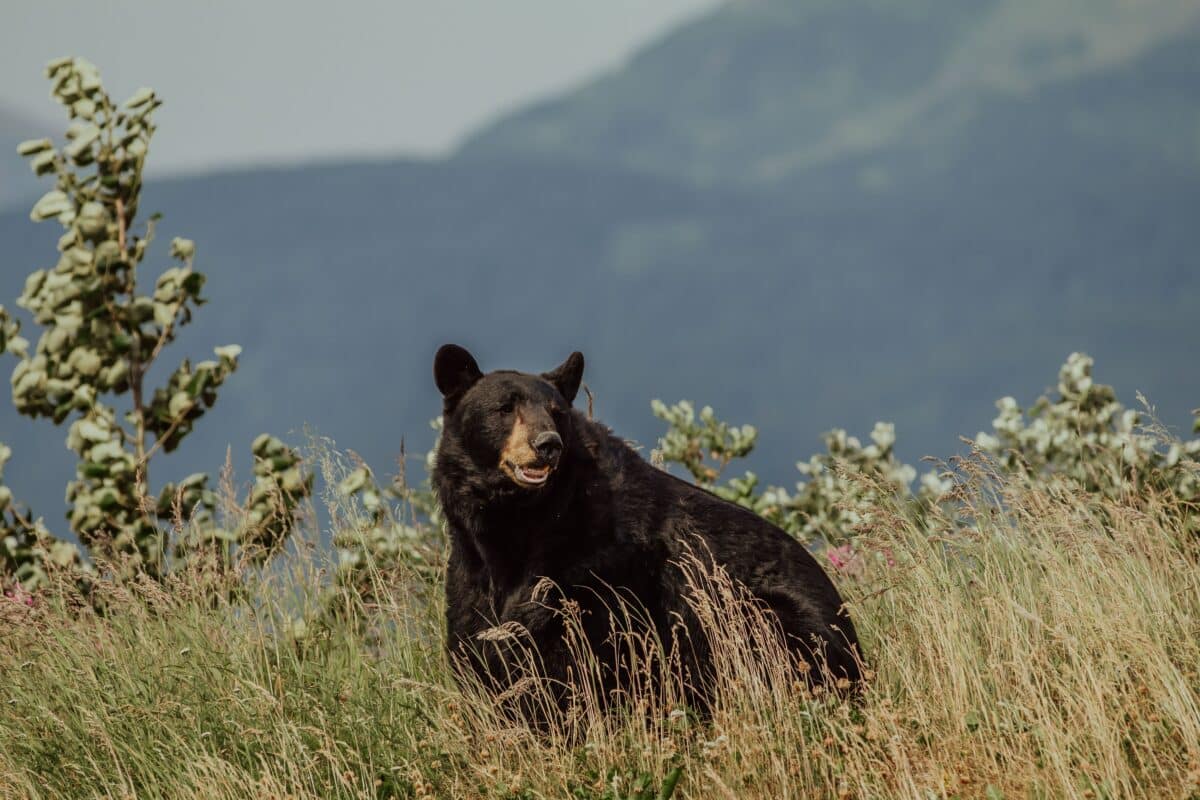
Regarding diet and hunting strategies, the American black bear and Tasmanian devil couldn’t be more different.
The American black bear is an omnivore that eats plants and animals. Its diet includes everything from berries and nuts to fish and small mammals. To catch its prey, the black bear might use its powerful paws to swipe at animals or climb trees to get to their nests. Meanwhile, the Tasmanian devil is a carnivore and primarily feeds on small mammals like rodents and wallabies.
Known for their fierce and aggressive nature, Tasmanian devils use their strong jaws and sharp teeth to bite and devour their prey. These two animals might have different approaches to hunting, but both have proven successful in their unique ways.
Diet & Hunting Strategies
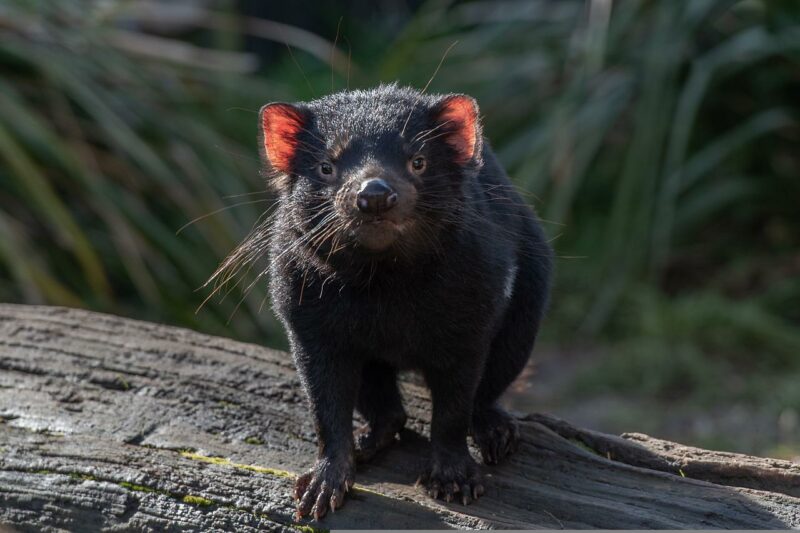
Regarding diet and hunting strategies, the American black bear and Tasmanian devil couldn’t be more different. The American black bear is an omnivore that eats plants and animals. Its diet includes everything from berries and nuts to fish and small mammals. To catch its prey, the black bear might use its powerful paws to swipe at animals or climb trees to get to their nests.
On the other hand, the Tasmanian devil is a carnivore and primarily feeds on small mammals like rodents and wallabies. Known for their fierce and aggressive nature, Tasmanian devils use their strong jaws and sharp teeth to bite and devour their prey. These two animals might have different approaches to hunting, but both have proven successful in their unique ways.
Social Interactions & Breeding Habits
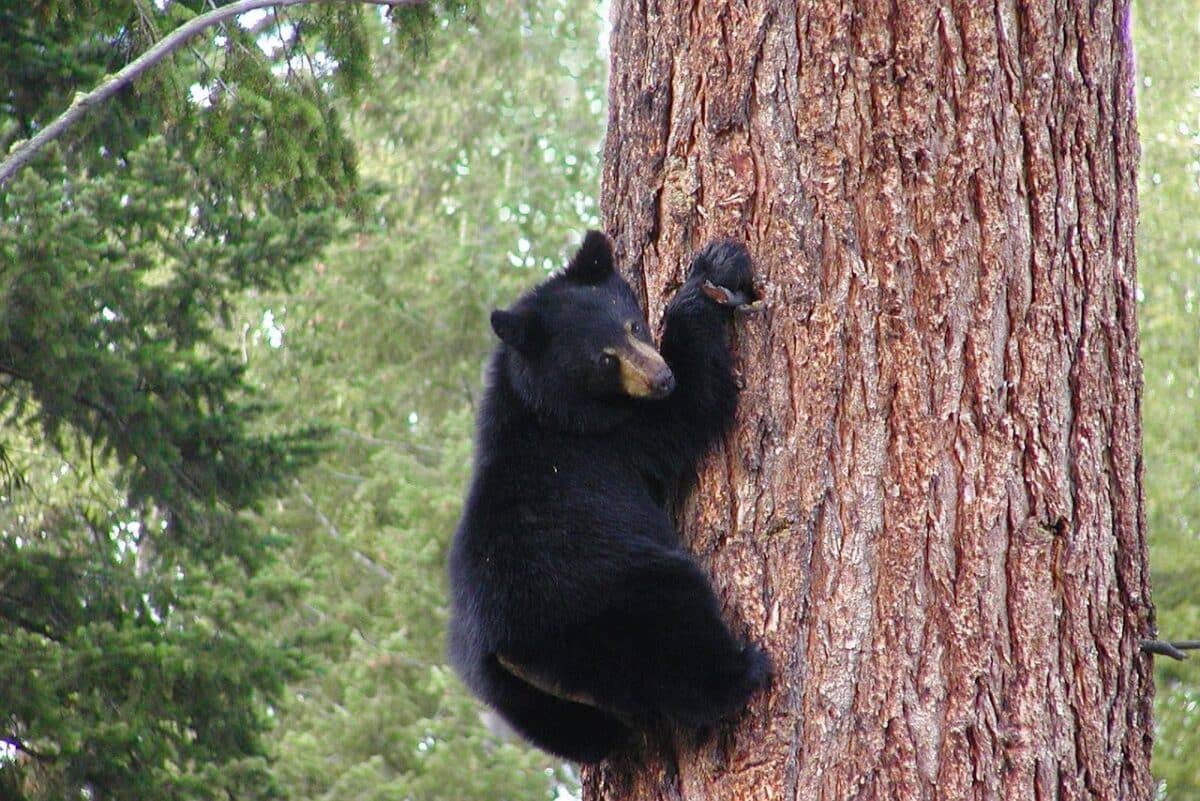
The American black bear and Tasmanian Devil might seem unlikely, but they share some interesting similarities in their social interactions and breeding habits. While solitary creatures, both species occasionally come together for mating purposes.
However, their courtship rituals are quite different. Male black bears actively seek out a female in estrus, while Tasmanian devils compete fiercely to mate. As for social interactions, American black bears are pretty tolerant of each other and will even share food sources. However, Tasmanian devils are known to be quite aggressive towards one another.
Despite their differences, both of these animals hold an essential place in their respective ecosystems, reminding us of the diversity and complexity of the natural world.
Human Interaction & Conservation Status
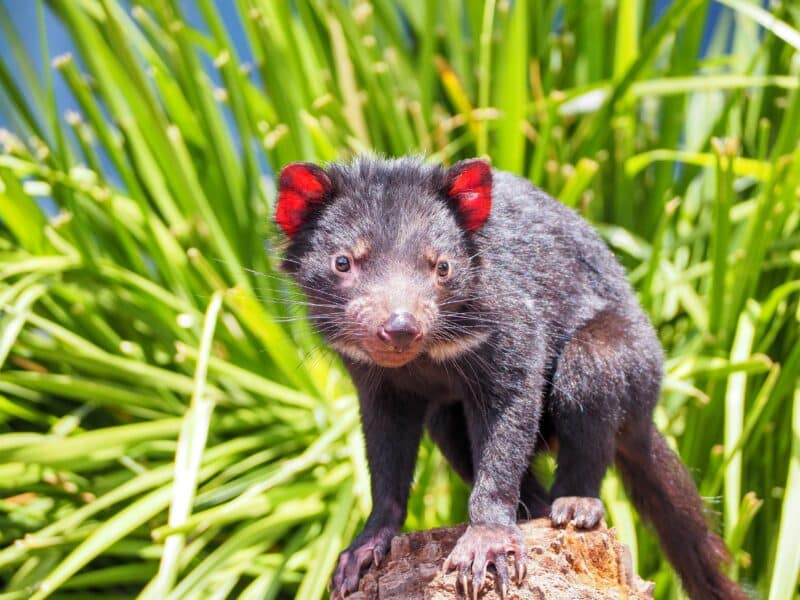
The American black bear and Tasmanian devil may seem like entirely different creatures, but they face similar human interaction and conservation challenges. Both species have had to adapt to living close to humans and suffer from habitat loss and fragmentation.
However, the conservation status of these two animals couldn’t be more different. While the American black bear is considered a species of most minor concern, the Tasmanian devil’s population has been severely impacted by the spread of a deadly facial tumor disease.
Key Points
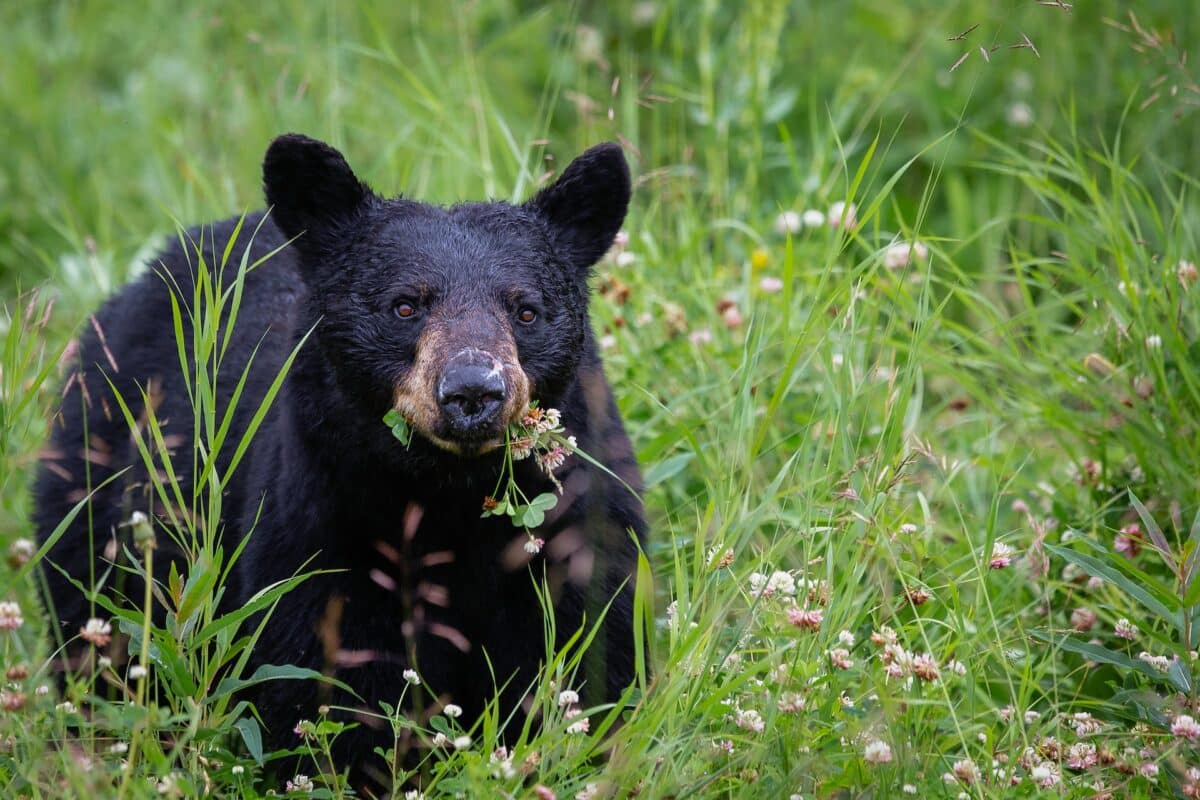
| The American Black Bear and Tasmanian Devil might not have much in common, but both unique animals have fascinating characteristics. |
| The American black bear and Tasmanian devil may be vastly different creatures. Still, they have one thing in common: their ability to adapt to various geographic locations and habitats. |
| American black bears tolerate each other and will even share food sources. However, Tasmanian devils are known to be quite aggressive towards one another. |
| The American black bear is an omnivore that eats plants and animals. Its diet includes everything from berries and nuts to fish and small mammals. Meanwhile, the Tasmanian devil is a carnivore and primarily feeds on small mammals like rodents and wallabies. |
| American black bears are pretty tolerant of each other and will even share food sources. However, Tasmanian devils are known to be quite aggressive towards one another. |
Wrapping Up with the American Black Bear vs. Tasmanian Devil
After studying the similarities and differences between the American black bear and the Tasmanian devil, it’s easy to see what both animals have in common regarding their anatomy, geographic range, diet, social interactions, and even their interactions with humans.
Even though they come from two distinct continents and habitats, they are closely related species with many of the same characteristics. Both animals are apex predators uniquely, so they must be appropriately managed.
Ultimately, human interaction must be kept to a minimum so these species can continue to thrive in their natural habitats as an integral part of our world’s ecology. Respecting these remarkable creatures will help ensure that future generations can enjoy them for centuries.
Thanks for following along with me! I hope you enjoyed reading about these two entertaining animals. African Elephant vs. African Buffalo, Discover The Fer-De-Lance Pit Viper Bite, and The African Lion Vs. Cape Wild Dog is next.
Join our Forum for free today!

- Beachgoers Save Massive Shark Stranded In Florida - July 22, 2024
- Pit Bull Rescued From Being Chained Its Whole Life Gets A Surprise - July 21, 2024
- Dog With Zoomies Takes Flight Into Barley Field - July 21, 2024

